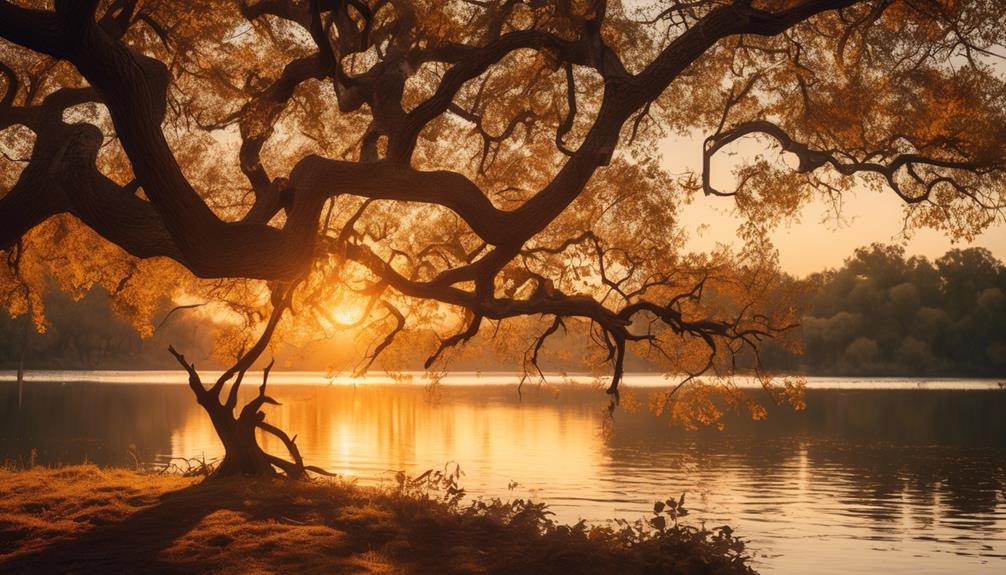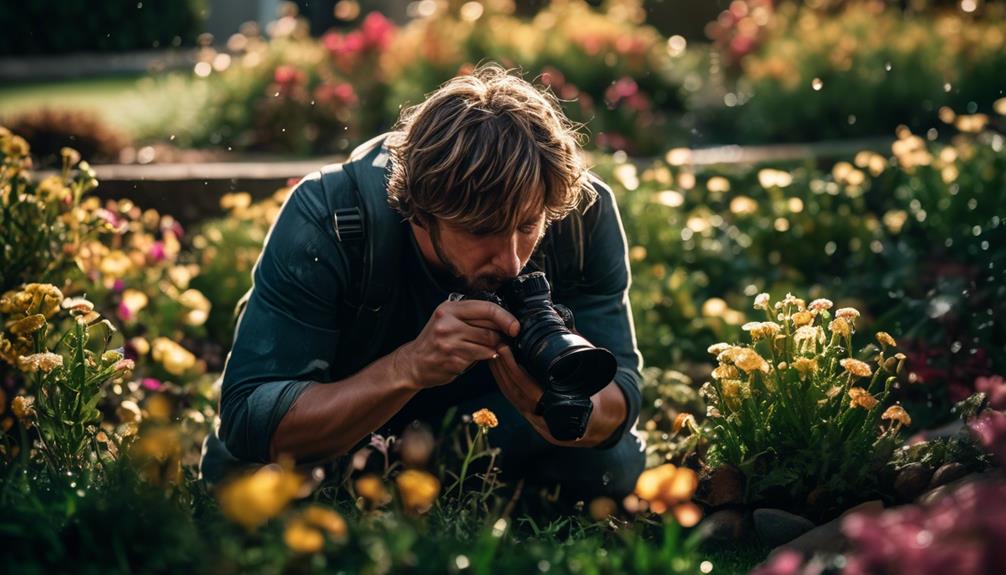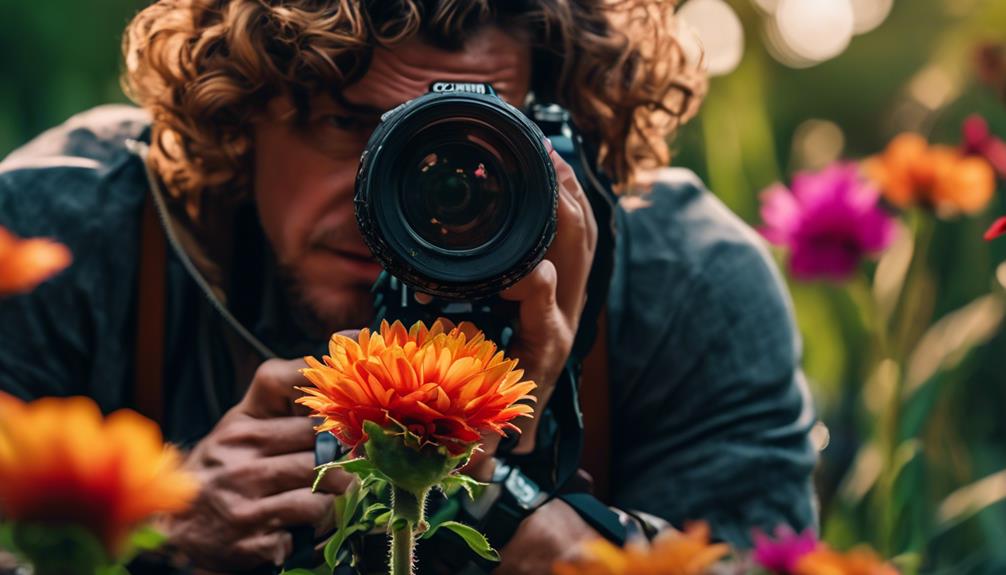Please note this post may contain affiliate links picked by me (Jay) that I have deemed may be of interest or relevant to you the reader of this.
These links do not affect the cost of the thing if you decide to purchase but i may get a little money if you choose to purchase.
For more information on my affiliate link policy click here.
As I stood there, camera in hand, I couldn't help but marvel at the limitless possibilities that lay before me. It's as if each angle held the power to transform a simple photograph into a work of art.
From low angles that add drama to high angles that offer unique perspectives, there's a world of creativity waiting to be explored through the lens.
But where do we begin? Which angles truly bring out the essence of a subject, capturing its soul in a single frame?
Join me as we uncover the secrets of the best angles for creative photography, and unlock a world of endless inspiration.
Key Takeaways
- Low angles can create dramatic shots by using silhouette shots and emphasizing foreground elements.
- High angles offer unique perspectives and allow for capturing grandeur and scale.
- Eye-level angles create natural and relatable photos, establishing intimacy and authenticity.
- Tilted angles add dynamism and artistic flair, breaking free from traditional compositions.
Low Angles for Dramatic Shots
Get ready to capture breathtaking shots with low angles, as they add a touch of drama and excitement to your photographs. One of the best ways to utilize low angles is by using them for silhouette shots. Silhouettes create a striking contrast between the subject and the background, resulting in visually stunning images. By positioning yourself below your subject and shooting upwards, you can capture their outline against a vibrant sky or a glowing sunset. This technique adds depth and mystery to your photographs, making them truly captivating.
Another fantastic way to make the most of low angles is by using them to emphasize foreground elements. By positioning your camera close to the ground and shooting upwards, you can exaggerate the size and importance of objects in the foreground. This technique creates a sense of scale and depth, making your images more dynamic and engaging. Whether it's a towering tree, a colorful flower, or a fascinating architectural detail, low angles allow you to bring these foreground elements to the forefront and make them the star of the show.
Low angles are a powerful tool in the hands of a creative photographer. They allow you to capture unique perspectives and transform ordinary scenes into extraordinary works of art. By experimenting with different angles and compositions, you can push the boundaries of traditional photography and create innovative and visually striking images.
High Angles for Unique Perspectives
Now let's explore the world of high angles, where creative photographers can discover unique perspectives that will take their images to new heights. High angles offer a fresh and exciting way to capture the world around us, allowing us to see things from a whole new perspective. By experimenting with different angles, we can add depth, drama, and a touch of magic to our photographs.
Here are three ways high angles can bring a unique perspective to your images:
- Bird's eye angles for aerial views: Imagine soaring through the sky like a bird, capturing breathtaking aerial views from above. By shooting from a bird's eye angle, you can showcase the world from a completely different vantage point. From towering landscapes to bustling cityscapes, this perspective allows you to capture the grandeur and scale of your subject in a way that's both awe-inspiring and captivating.
- Worm's eye angles for exploring the world from a different perspective: Sometimes, we need to look up to truly appreciate the beauty that surrounds us. Worm's eye angles, where the camera is positioned low and angled upwards, offer a unique perspective that can transform ordinary scenes into extraordinary ones. From towering trees to towering skyscrapers, this angle can create a sense of grandeur and make your subject appear larger than life.
- Experiment with different heights and angles: Don't be afraid to experiment with different heights and angles when shooting from a high vantage point. By varying your camera position, you can create different compositions and perspectives that add depth and interest to your images. Whether it's shooting from a rooftop, a hilltop, or even a ladder, the possibilities are endless when it comes to capturing unique perspectives from above.
With high angles, you have the power to unlock a world of creativity and innovation. So, grab your camera, explore the heights, and let your imagination soar as you capture unique perspectives that will leave your audience in awe.
Eye-Level Angles for Natural and Relatable Photos
Exploring eye-level angles in photography allows us to capture natural and relatable photos that truly connect with viewers. By shooting at eye level, we're able to create a sense of intimacy and authenticity, capturing candid moments and authentic emotions that resonate with the audience.
One technique that works well with eye-level angles is the rule of thirds. The rule of thirds is a compositional guideline that divides the frame into a grid of nine equal parts, with four intersecting points. By placing the subject at one of these points, we can create visually pleasing images that draw the viewer's attention and provide a sense of balance and harmony.
When shooting at eye level, it's important to pay attention to the background and foreground elements. By carefully selecting the elements within the frame, we can enhance the overall composition and create a more compelling photograph. Look for interesting textures, leading lines, or contrasting colors that can add depth and visual interest to the image.
Additionally, shooting at eye level allows us to establish a connection with our subjects. Whether it's a portrait, a street scene, or a candid moment, being at eye level with the subject helps us establish a sense of trust and empathy. This, in turn, allows us to capture genuine emotions and create images that feel relatable and authentic.
Tilted Angles for Dynamic and Artistic Compositions
As we continue our photographic journey, let's tilt our angles to unlock the potential for dynamic and artistic compositions that will truly captivate our viewers. By embracing tilted angles, we can add a touch of creativity and innovation to our photographs, elevating them to new heights.
Here are three ways tilted angles can enhance our images:
- Dutch angles for adding a sense of unease and tension: When we tilt our camera slightly to create a Dutch angle, we introduce a feeling of unease and tension into our compositions. This technique is particularly effective when capturing dramatic scenes or subjects that evoke strong emotions. It adds a unique and edgy perspective that grabs the viewer's attention and invites them to delve deeper into the story behind the image.
- Oblique angles for creating a sense of movement and energy: Tilted angles can also be used to convey a sense of movement and energy in our photographs. By tilting our camera at an oblique angle, we can create the illusion of a dynamic scene, as if our subject is in motion. This technique is perfect for capturing action shots, sports events, or any situation where we want to infuse our images with a sense of excitement and vitality.
- Experimenting with unconventional compositions: Tilted angles provide us with the opportunity to break free from traditional rules and explore unconventional compositions. By tilting our camera, we can challenge the viewer's expectations and create visually striking images that stand out from the crowd. This allows us to push the boundaries of our creativity and deliver photographs that are truly unique and memorable.
Overhead Angles for Capturing Intricate Details
To capture the intricate details of a subject, one can utilize overhead angles for a unique perspective that allows for a closer examination of the finer elements. This technique is particularly useful in macro photography and close-up photography, where the goal is to capture the smallest details in stunning clarity. By shooting from above, we can showcase the delicate textures, patterns, and nuances that might go unnoticed from other angles.
To fully appreciate the power of overhead angles, let's explore a comparison between a traditional frontal shot and an overhead shot using a 2 column and 4 row table:
| Frontal Shot | Overhead Shot |
|---|---|
| Limited view of details | Captures intricate details |
| Common perspective | Unique and fresh perspective |
| Standard composition | Creative composition |
| Misses out on finer elements | Reveals hidden beauty |
As you can see, the overhead angle offers a fresh and innovative approach to photography. It allows us to break free from the typical viewpoint and discover new ways of seeing the world. Whether you're photographing a flower, a piece of jewelry, or a plate of delicious food, an overhead angle can transform an ordinary subject into a mesmerizing work of art.
Furthermore, overhead angles give us the opportunity to experiment with different lighting techniques. By positioning the light source directly above the subject, we can create interesting shadows and highlights that enhance the texture and depth of the image. This adds a touch of drama and intrigue to the photograph, making it even more captivating.
Frequently Asked Questions
What Are Some Tips for Choosing the Best Low Angle for Dramatic Shots?
When it comes to choosing the best low angle for dramatic shots, there are a few tips and tricks that can really make a difference.
By shooting from a low perspective, you can create depth and impact in your photography. It allows you to capture unique angles and perspectives that can add a sense of drama and intrigue to your images.
How Can High Angles Provide Unique Perspectives in Photography?
High angle photography offers a fresh and captivating take on the world. By shooting from above, we can capture unique perspectives that are often overlooked. It allows us to play with composition, create interesting patterns, and add depth to our images.
Whether it's capturing a bustling cityscape or a group of people walking below, high angle photography adds a touch of innovation and creativity to our shots.
Are There Any Specific Subjects or Situations Where Eye-Level Angles Work Best?
When it comes to capturing the best angles for portraits, eye-level angles can work wonders. They allow for a more intimate and natural look, creating a connection between the subject and the viewer. Eye-level angles have the power to accentuate facial expressions and bring out the true essence of the person being photographed.
The impact of perspective in photography can't be underestimated, and eye-level angles provide a fresh and innovative approach to capturing stunning portraits.
What Are Some Creative Ways to Incorporate Tilted Angles in Photography Compositions?
Incorporating diagonal lines and using extreme angles are fantastic ways to create dynamic shots in photography. By tilting the camera and capturing the subject from unique perspectives, we can instantly add a sense of creativity and excitement to our compositions.
These tilted angles can bring a fresh and innovative look to our photographs, making them stand out and captivating our audience.
When Is It Most Effective to Use Overhead Angles to Capture Intricate Details?
When it comes to capturing intricate details in photography, using overhead angles can be incredibly effective. By shooting from above, you can highlight the architectural elements and unique features of a subject.
Whether it's capturing the intricate details of a building or exploring the use of overhead angles in still life photography, this technique can add a fresh and innovative perspective to your work.
It allows you to create visually interesting compositions that evoke a sense of wonder and curiosity in your audience.
Conclusion
In conclusion, finding the best angles for creative photography can truly elevate your images and captivate your audience. Whether you choose to experiment with low angles for dramatic shots, high angles for unique perspectives, eye-level angles for natural photos, tilted angles for dynamic compositions, or overhead angles for capturing intricate details, each approach offers its own artistic potential.
For instance, imagine a stunning case study where a photographer uses a tilted angle to capture a dancer in mid-air, creating a visually striking and dynamic image that sparks the viewer's imagination.
So go ahead, explore different angles and unleash your creativity!


